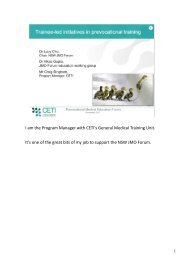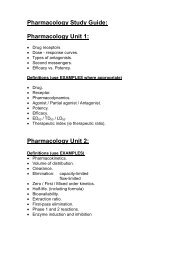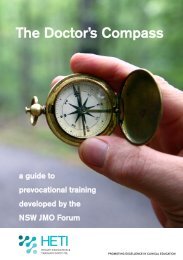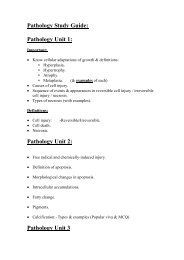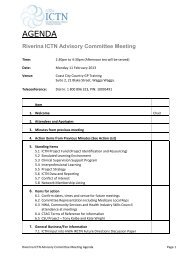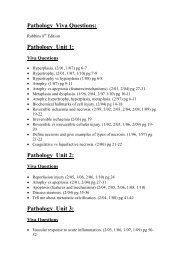Network principles for prevocational medical training - HETI
Network principles for prevocational medical training - HETI
Network principles for prevocational medical training - HETI
You also want an ePaper? Increase the reach of your titles
YUMPU automatically turns print PDFs into web optimized ePapers that Google loves.
Learning model part 2: Self-directed learning<br />
In one sense, all education and <strong>training</strong> in the <strong>prevocational</strong> program involves self-directed learning.<br />
Only the commitment and the engagement of the trainee with their supervisors and patients<br />
trans<strong>for</strong>ms teaching, experience, guidelines, simulations and so on into an integrated understanding<br />
of clinical practice.<br />
One of the most important lessons of <strong>prevocational</strong> <strong>training</strong> is that clinical practice requires a<br />
permanent commitment to professional development and lifelong learning. This requires trainees to<br />
seek (and act on) feedback from supervisors and other clinicians.<br />
The purpose of supervised clinical practice is to support the development of an independent<br />
practitioner who is self-regulating, committed to evidence-based practice, and there<strong>for</strong>e committed to<br />
lifelong learning.<br />
An essential skill to be practised, developed and tested during <strong>prevocational</strong> <strong>training</strong> is self<br />
assessment. Safe clinicians:<br />
• z are aware of their skills and their limitations<br />
• z know what they do well, and when they are<br />
better referring a patient to someone with a<br />
different skill set<br />
• z can identify their weaknesses, and are able<br />
to plan and carry out actions to reduce those<br />
weaknesses<br />
• z know when to seek help or further <strong>training</strong><br />
• z know where to find advice and further<br />
in<strong>for</strong>mation.<br />
Key elements<br />
Self-directed learning is an individual responsibility, but DPETs and supervisors can help inculcate<br />
appropriate attitudes and behaviours to support it.<br />
Supervisors should ensure that trainees can bridge the gap between theory and practical experience so<br />
that they can solve problems using both reflection in action and reflection after action. Supevisors can<br />
help trainees understand their current level of competence and point trainees to methods of building<br />
competence that are appropriate to their current stage of development.<br />
Curriculum<br />
• z Framework: ACF<br />
• z Term objectives described in term description<br />
• z Individual trainee objectives described in trainee journal or learning plan.<br />
Trainee assessment<br />
1 Self-assessment in trainee journal or similar record<br />
2 The ACF includes several capabilities related to self-directed learning and professional<br />
development. These capabilities should be assessed by DPETs and supervisors. For example,<br />
the DPET should assess each trainee’s abilities in self-assessment. Does the trainee show<br />
insight and accurate assessment of abilities? Does the trainee pursue opportunities <strong>for</strong> learning?<br />
Program evaluation<br />
1 Do trainees keep journals, logbooks or other evidence of self-directed learning?<br />
2 Are DPETs and supervisors open to requests from trainees <strong>for</strong> individual <strong>training</strong> opportunities?<br />
10



